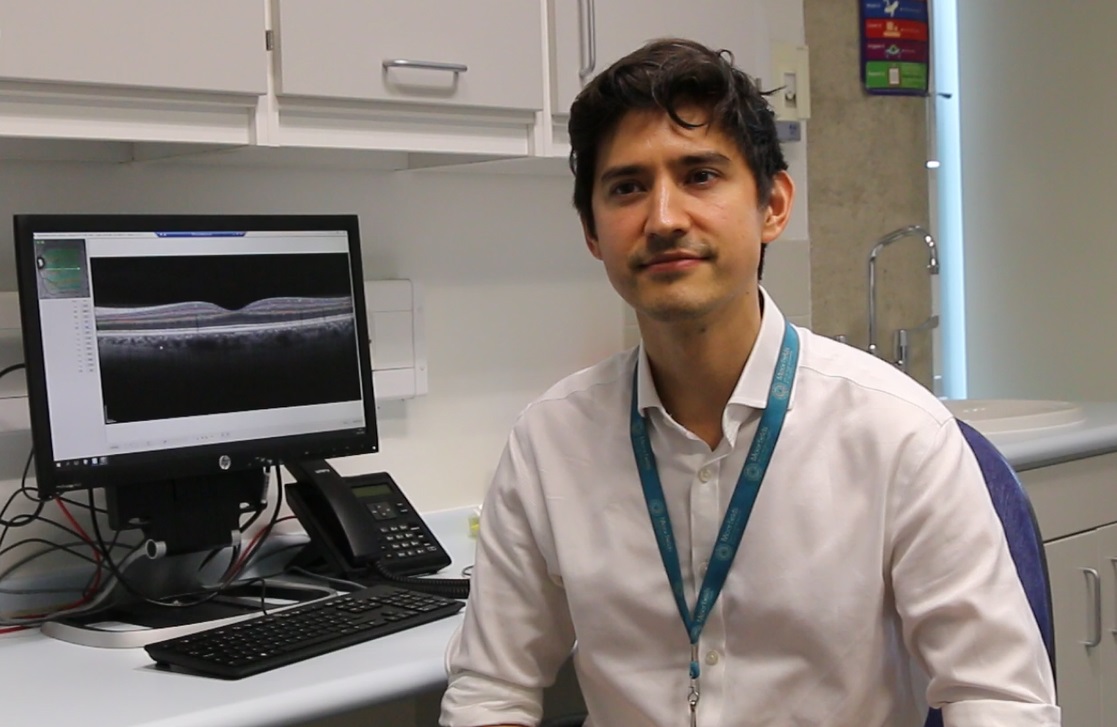Eye scans detect early Parkinson’s signs

Siegfried Wagner, principal investigator and clinical research fellow at Moorfields Eye Hospital, with an OCT retinal scan
Eye scans reveal markers of Parkinson’s disease on average seven years before patients were diagnosed, a study has shown.
The results were made possible by the largest study to date on retinal imaging in the condition. The research, published in Neurology, identified markers of Parkinson’s in OCT scans with the help of artificial intelligence (AI).
The study used the AlzEye dataset, linking the retinal photos and scans of more than 250,000 Moorfields Eye Hospital patients with NHS Digital data on people who develop Alzheimer’s disease and other forms of dementia.
The work was repeated using the wider UK Biobank database of healthy volunteers, which replicated the discoveries. The use of the two large datasets enabled the team to identify very subtle markers, even though Parkinson’s disease has a relatively low prevalence (0.1–0.2% of the population).
Siegfried Wagner, principal investigator for the study and clinical research fellow at Moorfields Eye Hospital, said: “I continue to be amazed by what we can discover through eye scans. While we are not yet ready to predict whether an individual will develop Parkinson’s, we hope that this method could soon become a pre-screening tool for people at risk of disease.
“Finding signs of a number of diseases before symptoms emerge means that, in the future, people could have the time to make lifestyle changes to prevent some conditions arising, and clinicians could delay the onset and impact of life changing neurodegenerative disorders.”
Retinal scans are the only non-intrusive way to view layers of cells below the skin’s surface. Machine learning AI is uncovering hidden information about the whole body from these images, in an emerging field of research called oculomics.
Data from eye scans has previously revealed signs of other neurodegenerative conditions, including Alzheimer’s, multiple sclerosis and schizophrenia. They can also indicate people at risk of high blood pressure and cardiovascular disease, including strokes and diabetes.
Louisa Wickham, Moorfields’ medical director, said: “Increasing imaging across a wider population will have a huge impact on public health in the future, and will eventually lead to predictive analysis. OCT scans are more scalable, non-invasive, lower cost and quicker than brain scans for this purpose.”